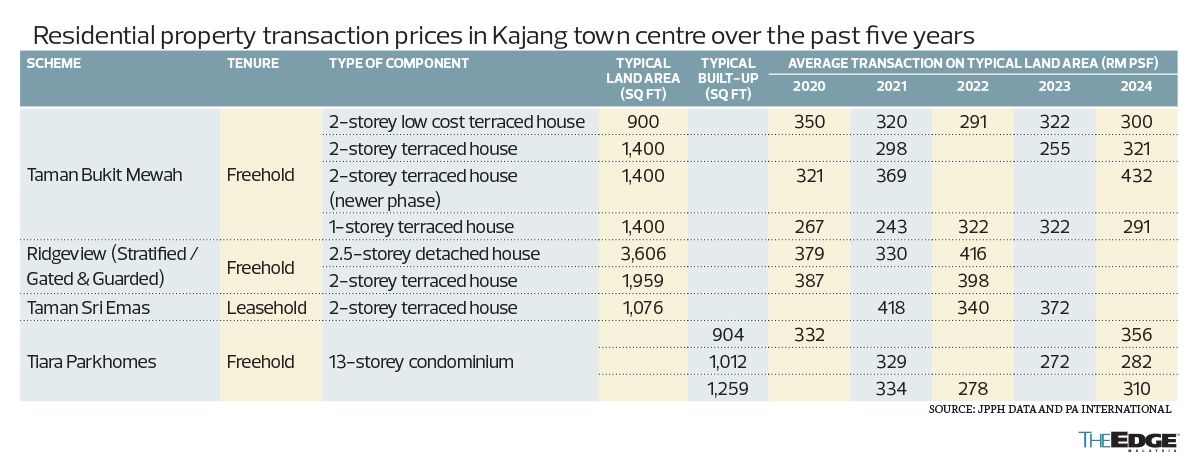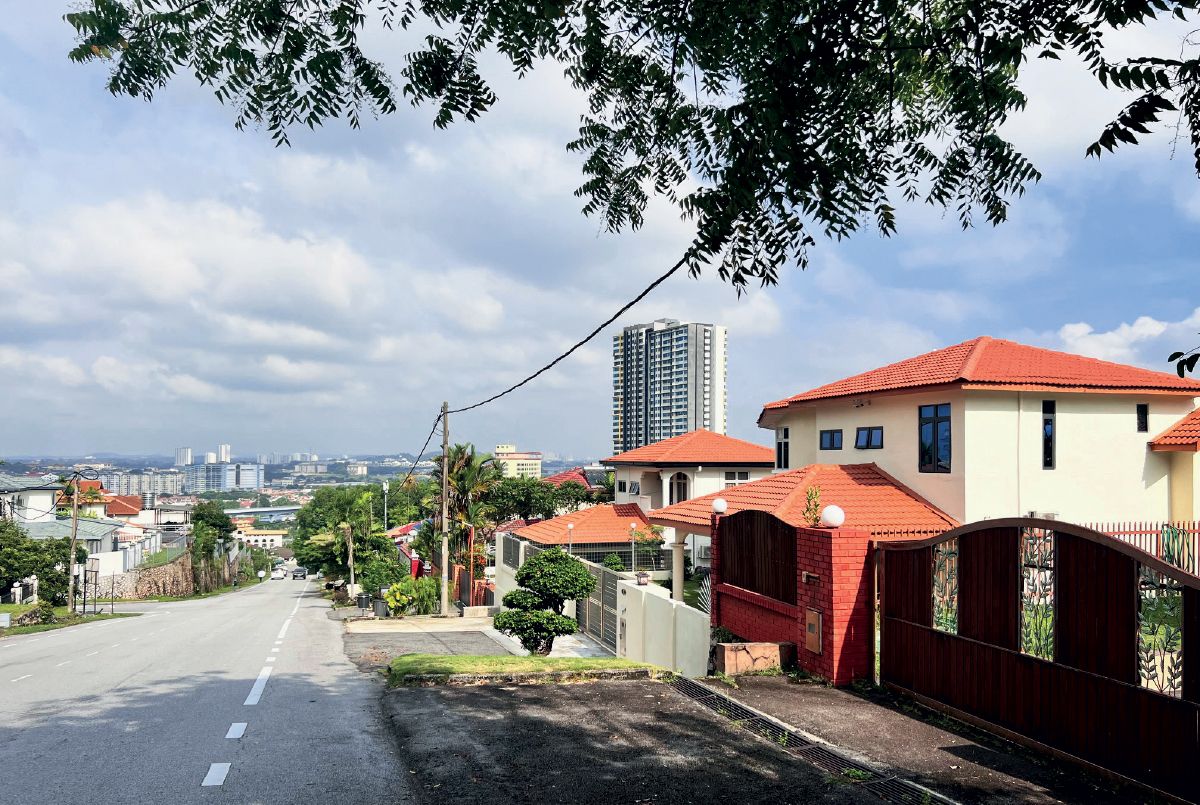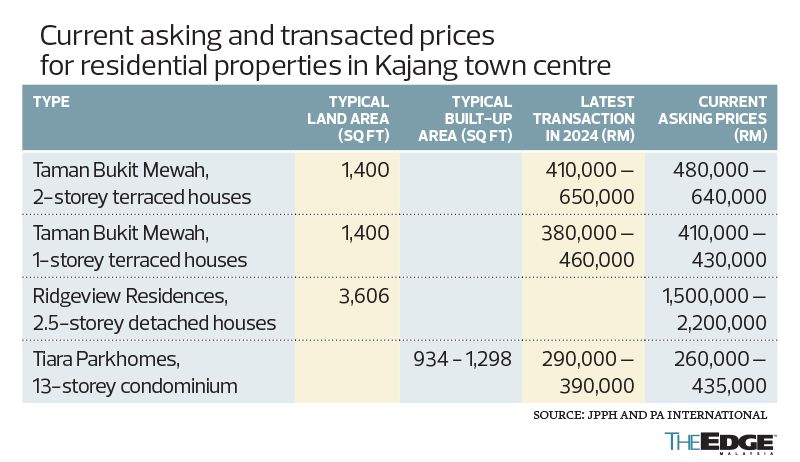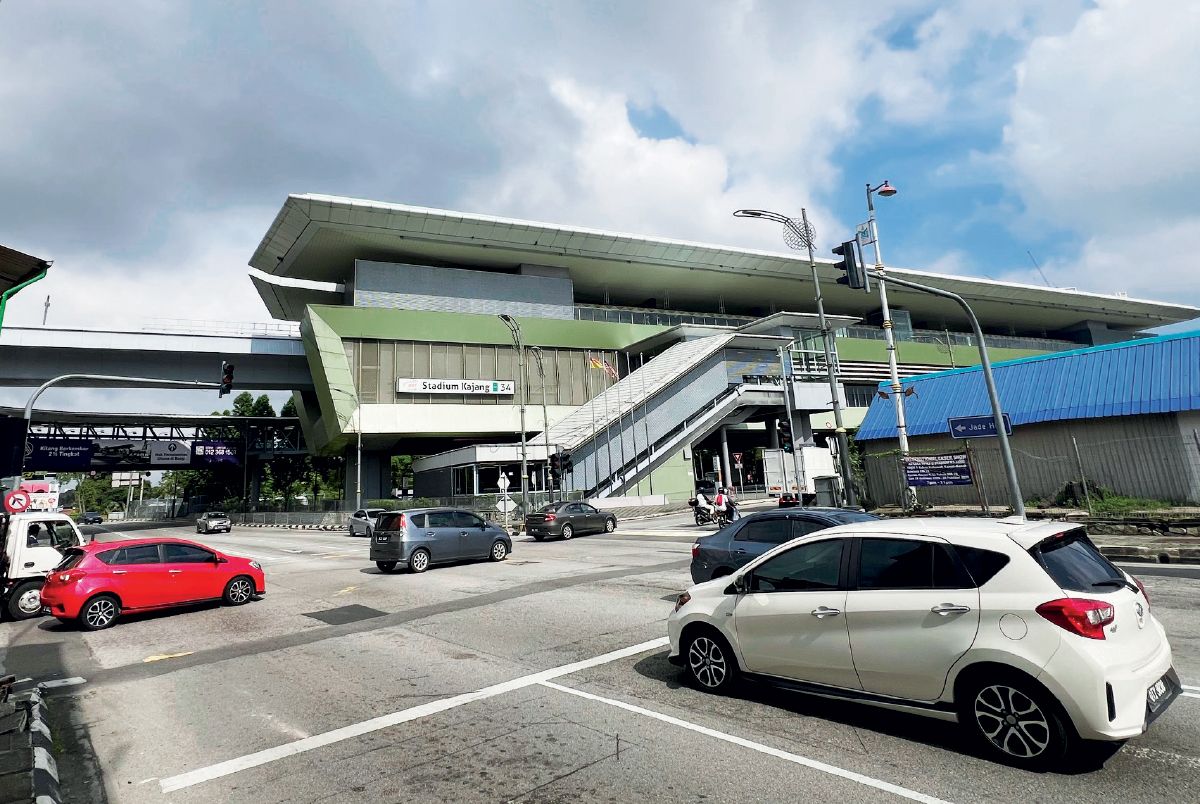
The rapid growth of the real estate market in Kajang town centre has brought a spillover effect to the existing landed residential developments (Photo by Mohd Shahrin Yahya/The Edge)
This article first appeared in City & Country, The Edge Malaysia Weekly on March 24, 2025 - March 30, 2025
We arrived at Tan’s humble eatery about half an hour before closing time at 3pm on a Friday, just in time to enjoy a refreshing bowl of ABC (shaved ice) to cool off from the sweltering afternoon heat. As the last customers of the day, Tan sat down with us, sharing his childhood memories of Kajang town.
A second-generation Chinese migrant, Tan was born and raised in Kajang. He grew up in a wooden house that doubled as a small eatery with his family of nine. The house on Jalan Tun Abdul Aziz is now home to a well-known stationery store.
“I’ve always remembered Kajang as a very lively place. It had everything within walking distance — the police station, the padang (field), a market, the fire station, houses and shops. There was not so much traffic back then, so my siblings and I would spend hours playing on the narrow roads with our neighbours,” Tan reminisces.
About 30 years ago, Kajang town centre underwent significant redevelopment. Tan and his family’s small eatery was relocated to a government-owned Medan Selera (food court), consisting of two rows of single-storey shops off Jalan Changkat. This area is now surrounded by modern high-rise condominiums and newly built landed homes, creating a striking contrast between the old and the new.
“There have been a lot of changes in Kajang over the past 30 years. But one thing that hasn’t changed is that the town is still vibrant and full of life today. In fact, it’s even busier now, especially with the MRT station completed a few years ago [located] right next to the padang. It’s a great place to live and work, despite the rising property prices,” says Tan, as he pulls down the roller shutter, marking the end of his work day.
“But I think the property prices are justified because it’s a mature area, much more developed compared with newer areas nearby such as Bangi and Semenyih.”
Rapid growth of real estate market
Reviewing the transaction data of residential property in Kajang town centre over the past five years from the Valuation and Property Services Department (JPPH) and its in-house data, PA International Property Consultants Sdn Bhd group managing director Subramaniam Arumugam says it is fairly affordable and stable compared with areas nearer to the Kuala Lumpur city centre. Kajang town centre is located about 20km south of the capital city.
“The factor that drives the continued growth of Kajang town centre’s property market is the affordable property prices, coupled with excellent connectivity and well-established infrastructure and amenities. I foresee that the property market will remain resilient,” he tells City & Country in an email interview.
Kajang is currently served by three MRT stations, namely Sungai Jernih, Stadium Kajang and Kajang stations. There is also a KTM station. The town is also easily accessible via Kajang Dispersal Link Expressway (SILK), Lebuhraya Kajang-Seremban (Lekas), South Klang Valley Expressway (SKVE) and Cheras-Kajang Expressway.
According to Subramaniam, most properties in Kajang town centre consist of landed residential units, with a growing number of high-rise projects — both commercial and mixed-use — emerging in recent years. “The introduction of TOD (transit-oriented development) has further transformed the area, bringing forth new concept projects such as MKH Boulevard II and Nexus Kajang, both strategically located near the Kajang KTM and MRT stations. Data also indicates that the majority of occupants are end users.”
Developed by the prominent developer of Kajang, MKH Bhd (KL:MKH), MKH Boulevard II is situated next to the Kajang KTM and MRT transit station in the heart of Kajang. It is a 42-storey mixed-use development offering serviced apartments of between 550 and 950 sq ft, with selling prices from RM250,000 to RM512,000. It is also the first TOD project in Kajang.
Also developed by MKH, Nexus Kajang is 80m from the Kajang MRT-KTM interchange station, offering about 1,200 serviced apartments spread across three residential towers. The launch price was RM288,000 in 2019. The ongoing project has recently opened up its third tower for sale.
Apart from TOD projects, the past decade has seen a growing number of high-rise residential developments being launched, with market response remaining strong — even during the pandemic — highlighting strong domestic housing demand.
The rapid growth of the real estate market in Kajang town centre has brought a spillover effect to the existing landed residential developments nearby. Take Taman Bukit Mewah as an example. The double-storey terraced houses with a typical land area of 1,400 sq ft grew 7.7% to RM321 psf in 2024 from RM298 psf in 2021, while the single-storey terraced houses recorded an increase of 8.9% to RM291 psf compared with RM267 psf in 2020, according to data by JPPH and PA International.
The current asking price for double-storey terraced houses in Taman Bukit Mewah ranges from RM480,000 to RM640,000, while single-storey terraced houses are priced between RM410,000 and RM430,000.
As background, Taman Bukit Mewah is a flagship township development by MKH. It consists mostly of landed houses, from single-storey terraced houses to bungalows, with some shoplots as well as low-rise flats and apartments. The township also features various amenities, including a public recreation park, community hall, mosque and a clubhouse with a popular restaurant overlooking Kajang town centre.
“MKH is widely recognised as the pioneer developer in Kajang, particularly in the town centre. Notable townships in Kajang town centre include Taman Bukit Indah, the first residential township in Kajang, and the 300-acre Taman Bukit Mewah. Another landmark is Plaza Metro Kajang, the region’s first shopping complex, which has remained a popular shopping destination for Kajang residents till today,” Subramaniam shares.
Steady price growth
In the 1980s, Kajang-based MKH spearheaded the redevelopment and expansion of Kajang town centre, which then housed the government agencies and administrative centre of Hulu Langat District Centre, now Kajang Municipal Council (MPKJ) after the town gained the municipal status in 1997. At the time, there were plans to relocate the council to Bangi due to space constraints for further expansion. In return, the developer was granted the use of part of the land to construct new shophouses and a shopping complex, which remain the commercial hub of Kajang today.
Taking a stroll along Jalan Tukang, where old shophouses of more than 100 years old still can be found, we met a 71-year-old woman who wished to be known as Aminah. She was doing her regular tidbits shopping at the 120-year-old biscuit and snack shop, Xin Kwong Sang Woh Enterprise. As a local who owns a single-storey terraced house in Taman Bukit Mewah, she believes the vibrant energy of the town centre is key to the impressive rental and price appreciation of property.
“The house was passed down to me from my late mother. It is currently rented out to students, and it fetches a very good rate. Finding a tenant or buyer has never been an issue because the taman is one of the closest to the town centre. You can find everything you need here,” says Aminah, although she declines to disclose the rental rate of her property.
According to Metro Homes Realty Bhd executive director See Kok Loong, the asking monthly rent for a single-storey terraced house at Taman Bukit Mewah ranges from RM1,000 to RM1,600, depending on the condition, location and furnishing.
“The landed homes near the town centre get to enjoy established amenities such as schools and colleges, hospitals, shops and malls. With the completion of the MRT stations a few years ago, it makes this location more attractive compared with the newer developments located further from the town centre, which lack public transport,” See shares.
While he foresees that the residential property prices in Kajang town centre will continue to experience steady, moderate annual growth of 2% to 4%, or transaction price ranges of RM500,000 to RM900,000 for landed properties and RM250,000 to RM500,000 for high-rise units, he highlights that traffic congestion and ageing infrastructure could limit the potential for growth in the longer term. These factors could diminish the area’s appeal to prospective buyers and investors, possibly slowing its upward price momentum over time.
“Although the area provides a wide range of amenities and facilities, many of them are outdated and in need of modernisation, resulting in inefficiencies. This is particularly evident in the ageing road and drainage system, as well as badly managed traffic flow, which causes issues such as traffic congestion and flash floods,” See notes.
Infrastructure upgrading needed
Agreeing with See, PA International’s Subramaniam highlights that the town centre’s existing road network has limited room for expansion, leading to frequent congestion. There are also limited parking spaces in the town.
“These are some of the reasons why property prices in Kajang town centre have remained ‘stable’ over the years, which may be less attractive for investors, in general. In comparison, newer developments nearby that benefit from improved urban planning that offer wider roads, better infrastructure and a range of property choices are more appealing to investors and young buyers, which reflects the stronger annual price appreciation rate,” Subramaniam says.
Moreover, the scarcity of development land in the region, along with existing restrictions on the redevelopment of ageing buildings, will limit opportunities for urban renewal and new projects in the area. This lack of available space, coupled with regulatory constraints, means there are fewer opportunities to revitalise the area. As a result, it is likely to remain stagnant in terms of growth, lacking strong catalysts that could drive significant price increases in the near future.
“While it faces challenges such as limited land availability and ageing developments, opportunities in TOD projects may drive its evolution into a more modern, transit-friendly area. The town’s affordability, good connectivity and well-established infrastructure will remain its key strengths,” he shares.
As new supply is foreseeably limited in the future for Kajang town centre, Subramaniam believes the demand for housing, be it new or in the secondary market, is still going strong.
“However, be mindful that for landed houses, buyers should be prepared for renovations [for secondary homes], as most properties in Kajang town centre are older and may require upgrades to suit current lifestyle needs, while mixed-use developments near the MRT and KTM stations are ideal for homebuyers who prioritise accessibility and plan to rely on public transport for daily commutes,” he shares.
Sharing a similar view, Metro Homes Realty’s See notes that the demand for properties in this area remains stable, largely driven by Kuala Lumpur commuters seeking more affordable housing options and mid-income families looking for greater space and accessibility.
“Over the next few years, property prices in the area may rise by 10% to 15% cumulatively, fuelled by the ongoing demand and the area’s proximity to key transport routes. However, competition from neighbouring areas such as Kajang 2 and Semenyih continues to pose a challenge.
“These areas offer more affordable options and are seeing growth in both infrastructure and development, which could potentially impact the long-term price growth in this region. While the market remains steady, it’s essential to monitor how the developments in these competing areas will affect the local property dynamics,” See says.
Save by subscribing to us for your print and/or digital copy.
P/S: The Edge is also available on Apple's App Store and Android's Google Play.
- Malaysia hit with 24% US reciprocal tariff effective April 9
- CIDB issues apology, retracts statement on devastating gas pipeline inferno
- Apple production hubs, including Malaysia, hit by tariffs
- Malaysian stocks decline following Trump reciprocal tariff
- Global companies face a new reality of Trump tariff chaos
- Nike falls as Trump’s reciprocal tariff plan sinks retailers
- China services growth picks up with economy pressured by tariffs
- OCBC aims to fund S$17b over five years to support FDI into United Kingdom
- Australia says US tariffs 'not act of a friend' but rules out reciprocal move
- Amazon adds 11th hour intrigue to TikTok acquisition drama






